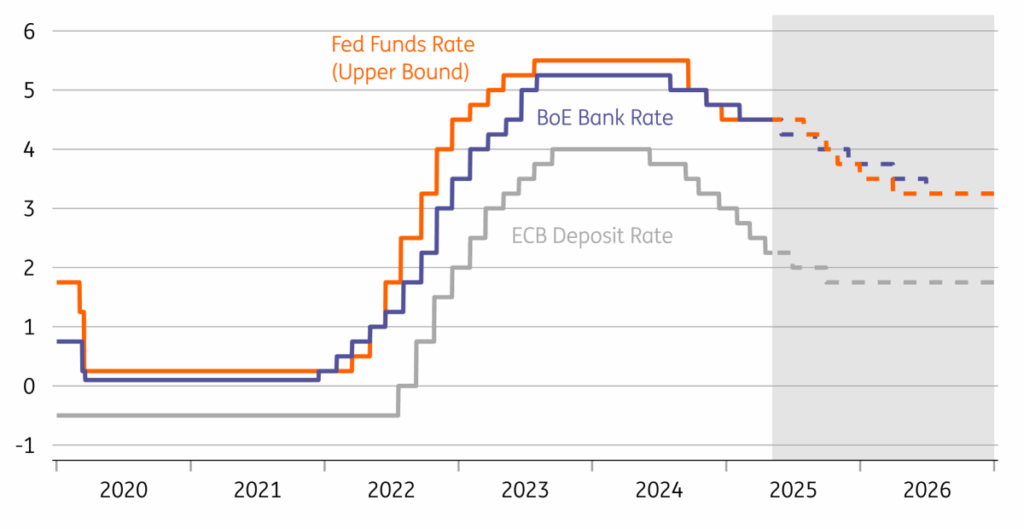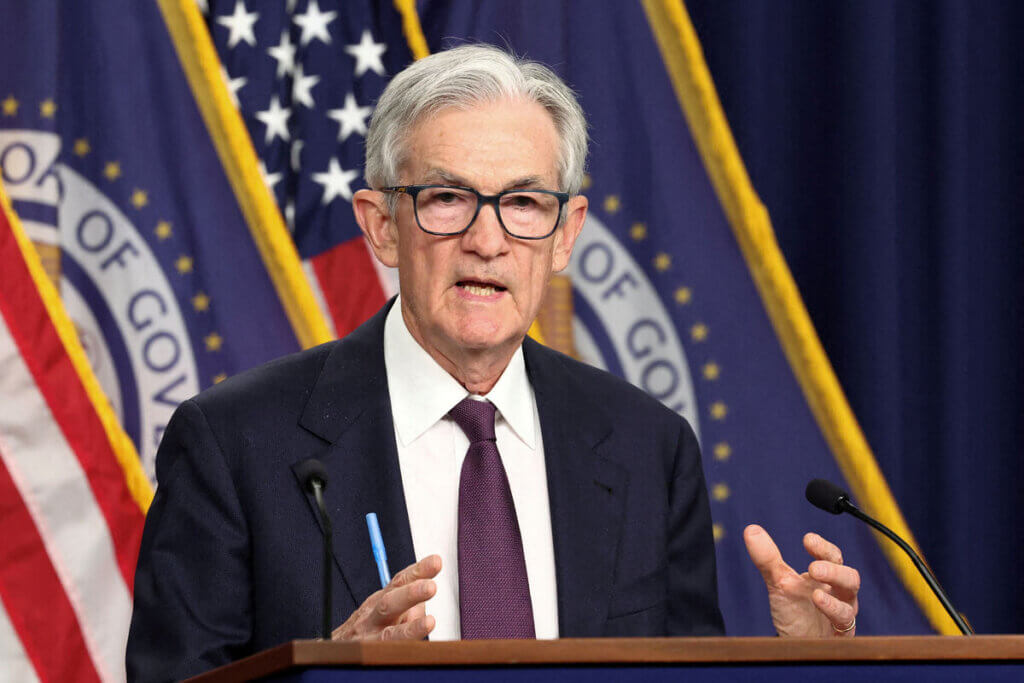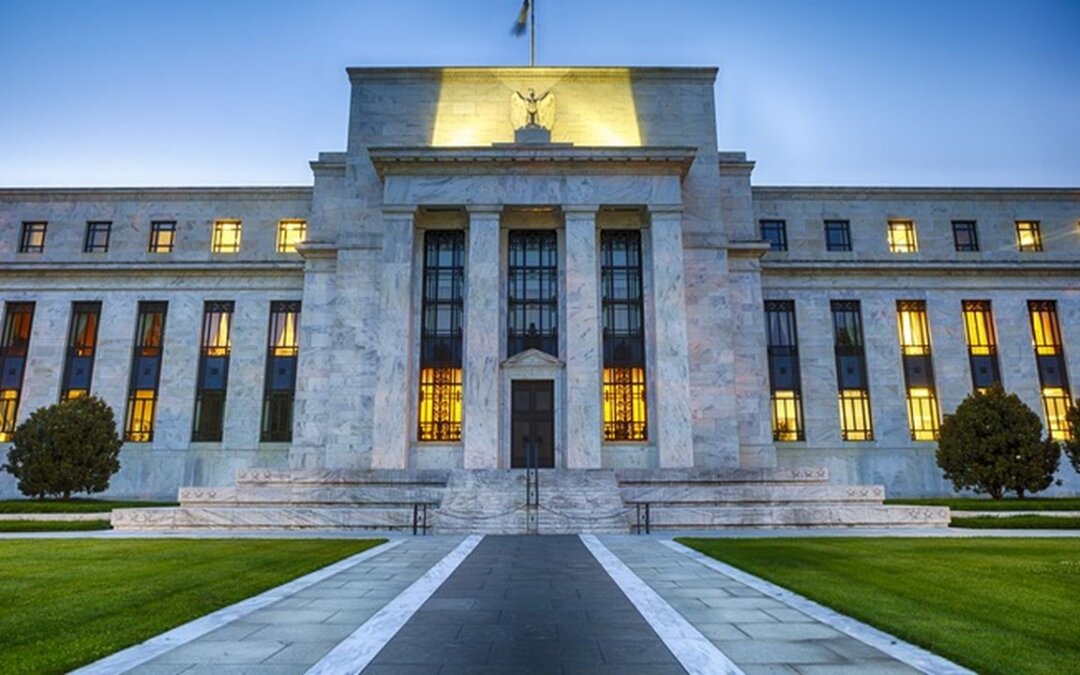Introduction
As we enter mid-2025, global financial markets are adapting to a new economic environment shaped by the Federal Reserve’s interest rate policy in 2025. After years of volatility driven by the pandemic, geopolitical conflicts, and monetary tightening, the Fed’s decisions continue to dominate headlines and shape capital flows worldwide.
Understanding the Fed’s strategy on interest rates in 2025 is crucial for investors, policymakers, and businesses navigating today’s global economy.
The “Higher for Longer” Environment
Since 2022, the Federal Reserve has led one of the most aggressive tightening cycles in decades to fight persistent inflation. By 2024, inflation cooled slightly, but underlying price pressures — particularly in services, housing, and labor markets — remained elevated.
Now in 2025, with inflation hovering around 2.5% to 3%, the Fed maintains its cautious stance. Wage growth and strong consumer spending prevent a quick return to its 2% inflation target, keeping interest rates elevated.
“The Federal Reserve is managing not just inflation, but long-term expectations in a structurally changing economy.”
As of May 2025, the federal funds rate remains near 5.25%, with limited rate cuts anticipated in the near future.
I don’t know about you bu I look forward to know how many likes this article “Interest rate 2025” will get !
Global Implications of Federal Reserve Interest Rates 2025
The Federal Reserve’s interest rate policy in 2025 affects not only the U.S. but the entire global financial system. Here’s how:
- Stronger U.S. Dollar: A stronger dollar creates challenges for emerging markets with dollar-denominated debt.
- Capital Flows: Higher U.S. yields attract capital away from riskier markets into U.S. Treasuries.
- Diverging Central Banks: Monetary policy in Europe, Asia, and emerging markets often conflicts with Fed policy, creating volatility.
- Corporate Borrowing Costs: Global businesses face higher financing costs, leading to more cautious debt and investment strategies.

Unlike previous cycles, Federal Reserve interest rates in 2025 are shaped by deeper structural changes:
- Aging populations are tightening labor supply, driving wages higher.
- De-globalization is increasing production costs as companies reshore operations.
- Energy transition investments create input price volatility.
- Government spending remains elevated, increasing fiscal pressures globally.
“The zero interest rate decade is increasingly viewed as an exception, not the rule.”
Investment Strategy Under Federal Reserve Interest Rates 2025
Investors are adjusting portfolios to this new reality:
Equities:
Higher discount rates compress growth stock valuations. Profitable, cash-generating companies with pricing power are prioritized.
Fixed Income:
For the first time in years, bonds provide meaningful real returns. Short-duration bonds, investment-grade credit, and structured debt are back in favor.
Private Markets:
Private equity and credit are recalibrating as leverage becomes more expensive. Operational improvements matter more than financial engineering.
Currencies & Commodities:
Currency volatility is high, while commodities react to geopolitical tensions and supply disruptions.

Labor Markets: The Fed’s Key Indicator
Labor market strength remains central to the Fed’s decisions. Despite higher rates, U.S. unemployment remains low (~4%) with wage growth still above 4% annually.
As long as labor markets remain tight, the Federal Reserve may keep interest rates elevated in 2025, even at the risk of slowing broader economic growth.
Diverging Global Central Banks
While the Federal Reserve’s interest rates in 2025 set the global tone, other central banks face different realities:
- The European Central Bank (ECB) may begin rate cuts as inflation cools.
- The Bank of Japan (BOJ) is only starting to exit its ultra-loose monetary policy.
- Several emerging markets tightened earlier and now face growth pressures.
This divergence creates opportunities for cross-border investment strategies, but also increases volatility.
Conclusion
The Federal Reserve’s interest rates in 2025 are not just a temporary response — they reflect a long-term shift in global monetary policy. Central banks worldwide are recalibrating to a new normal: structurally higher inflation, tighter labor markets, and more expensive capital.
For global investors, success in 2025 and beyond will depend on discipline, risk management, and a clear understanding of this evolving macroeconomic regime.
Other cool articles
- Swiss SMEs and Private Equity: Why Switzerland’s Mid-Market Is a Target for Global Funds
- Secondaries in Private Equity: Why LP Liquidity Is Creating a New Market Segment
- Permanent Capital Vehicles: The Next Evolution of Private Equity?
- Swiss Safe Haven: Why Switzerland Remains a safe bet for Investors
- Investing 2025: How Young Investors Should Navigate Higher Rates and Market Volatility
- BRICS Currency 2025: Is De-Dollarization Finally Happening?
- Federal Reserve Interest Rates 2025: How Global Markets Are Adapting

